Love Thy Neighbor

Stay informed on our latest news!


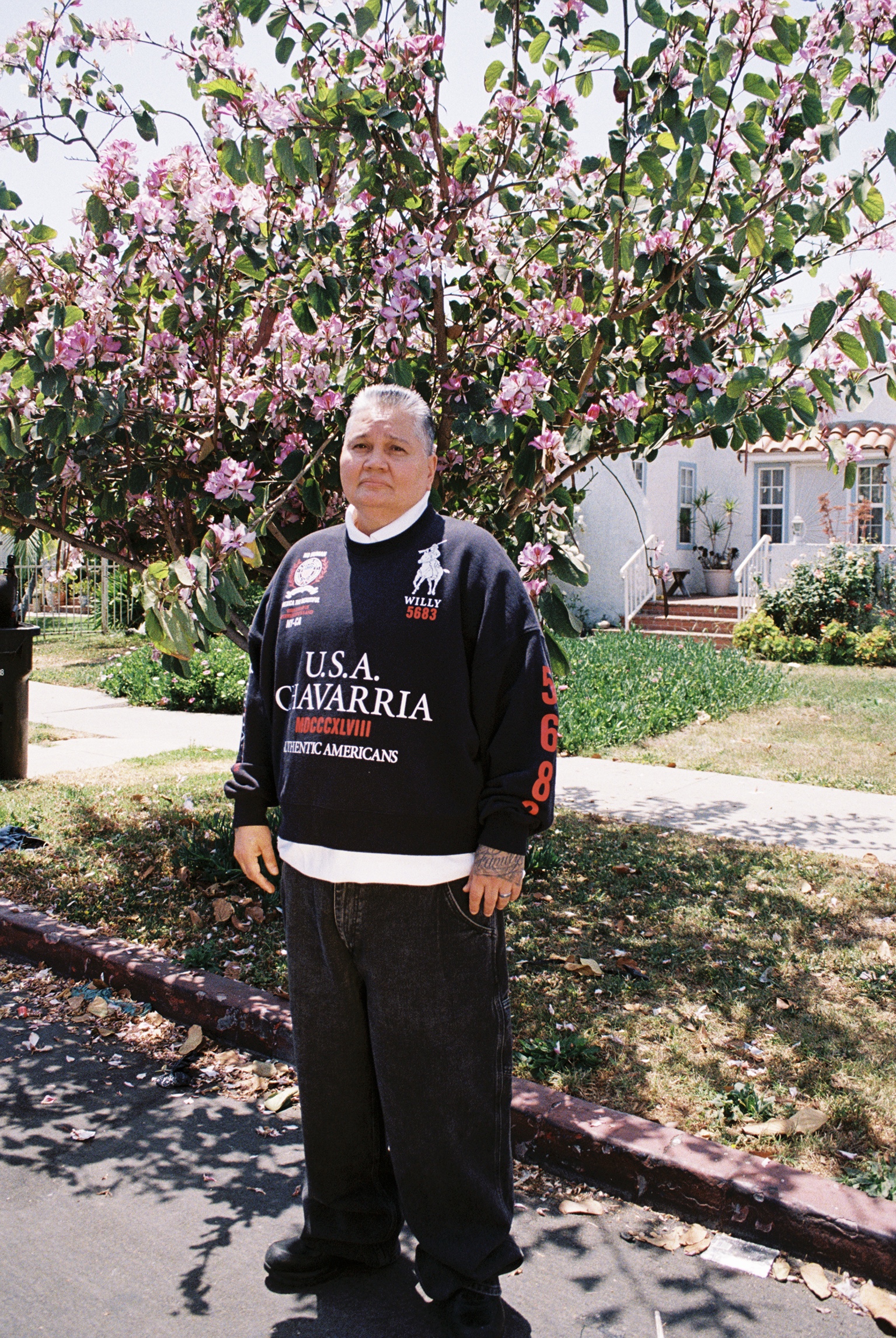













Noah recently founded PRIV.Y, a creative agency and production company based in the Lower East Side. As the gallery’s director, he had been patiently waiting for the right project to debut within the space, a project that would empower artists like Tommy and himself and truly highlight the strength in unity. AM/PM was the perfect place to start.
office sat down with Noah and Tommy after the exhibition came to a close — but ahead of their plans to release an AM/PM book sometime later next year — to discuss Tommy’s craft and what it was like organizing their first show together.
Noah Berghammer— I first met Tommy when he came by my studio in Chinatown and we instantly clicked personality-wise. We're both quite spontaneous and outgoing people. But I think Tommy and I kind of balance each other out — I'm a raging optimist and Tommy's kind of like, 'Eh, I don't know,' about that stuff. That day, he told me about this concept that he had, which was AM/PM. Tommy, you'd had this concept for a while and it's kind of taken different shapes and forms other than what we created. Do you want to talk a little bit about different forms it's taken and where the idea came from?
Tommy Rizolli— I grew up in the city of DC, and being out with my friends and having independence was a really prevalent factor in my childhood. So it makes sense that my work then progressed into just photographing my friends, whether it's editorial work or more documentary-based work, like this project. When I moved to New York, I was introduced to some really special, hardworking artists that ultimately became some of my best friends, along with people that I had been friends with for a really, really long time. So it was initially conceptualized as I had been shooting my friends in New York and then maybe two years after that, I was like, 'Oh, that'd be cool to do a book or something.' The concept highlighted this juxtaposition of my really tight-knit group of friends here, in the daytime and then at nighttime.
NB— That was the thing that was really drawing to me. I feel like I've grown so much as an artist since moving to New York because the city forces you to, based on how much you're intaking the people that you're meeting and the experiences that you're having. I hadn't heard anybody really define it in a way that was so clear until Tommy talked about AM/PM. Because when I first moved to New York, I would meet all these people at parties, at events, at Fashion Week — and I'd think, 'How do you actually become friends with these people?' To me, my daytime friends were the people that I turned into real friends. So it was funny having somebody else come in with this whole concept that illustrated that so well. I don't even think that I had really seen many images from your concept of the show. I was really just drawn to your work at large. And to the concept, and then to you as an artist. Tommy, I know you talked about a book, but was the fine art context ever something you were thinking about within your work?
TR— I don't think so. I can’t really describe what my work is. I think something that's important to me is, at least when it comes to photography, that style can be a hindrance. For me, themes in my work are more important and, in my work there are always a few, but the overarching one is that the people I photograph — whether it's commercial work or personal work — are people that I'm really genuinely close with and have a real connection with. So yeah, I wouldn't say fine art was in the back of my mind. I don't even know if I knew that that was a way to describe certain styles of photography. I just wanted to shoot the shit I wanted to shoot. I didn't really give a fuck.
NB— Having been your friend for a year and a half, you've been so unwavering to that motive. I get frustrated with Tommy every once in a while because he chooses not to shoot commercial work. But then you see in the images why they work, it's because there's a relationship there and nothing is forced. I'd always wanted to have this physical space for my community to find refuge or to be able to show work or perform. I was thinking live music venue, I was thinking cafe, I was thinking concept store. But then I thought, 'What could a gallery or an exhibition space look like if it's also an office and also a performance space?’ — kind of like this shapeshifting, melding place. And when I was able to secure that, I thought to myself, 'Now I have a gallery. Who do I show?' And you immediately popped into my head. Having gone through that whole process together, I know that it was pretty emotional for you to go through the negatives and whittle down what images would make the show. You want to talk a little bit about the curation process?

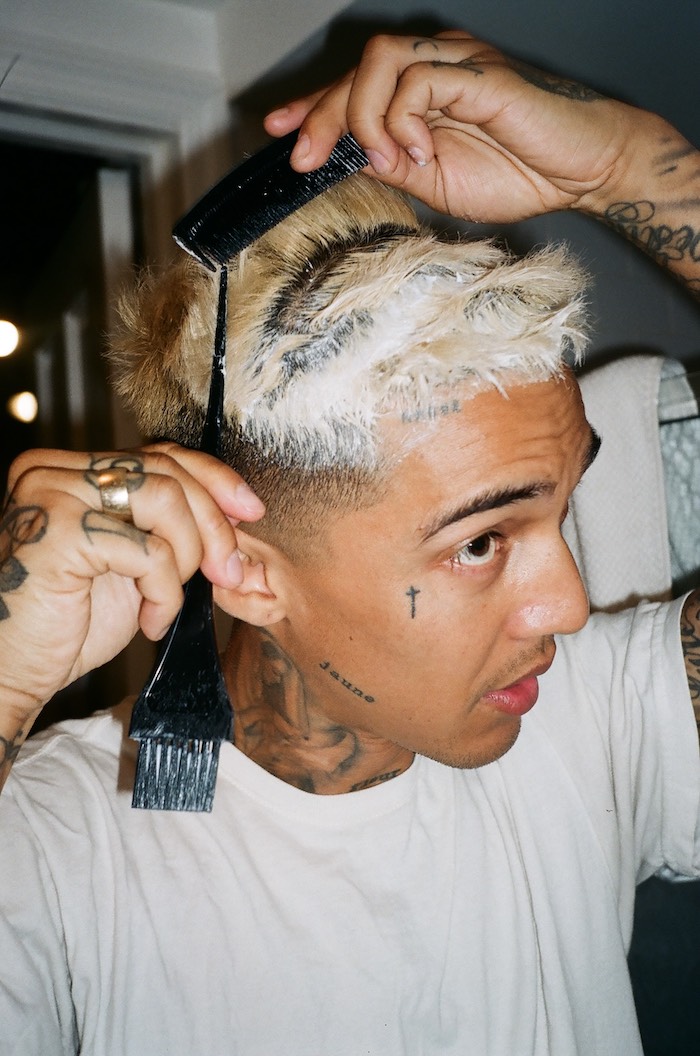
TR— Yeah, I mean it was really cool. First it was looking through all the negatives and then cross-referencing those with the selects we wanted in the show and then figuring out which ones we wanted to hand-print. It was super emotional. I mean, it was five years of living here just flashing before your eyes. I have a newfound gratitude for my friends. People come and go, but it's nice to see how close we've all gotten and the people that have remained.
NB— A lot of these relationships and these connections that we have to people, we don't really have a clear definition of why they are so special. When I look at your work, especially in the context of all of it together, what I feel are very emotive feelings, but I don't really know what they are. When I see you riding on the dirt bike across the Manhattan Bridge, I don't really know what that makes me feel, but I know it makes me feel something, you know? It's defintiely an emotional process when you're going through work and then you're giving it context and then you're dealing with why that context was important to your life. I know that some of those images touch on past relationships. They touch on friends that you're not really friends with anymore. They touch on people that have remained for 20 plus years in your life. It is really kind of like sitting back and saying, 'This is who I am.' So when you're thinking about yourself as a photographer, or better yet as a person, who are you?
TR— I think I've always had a lot of confidence in knowing that my friends are special. They're good people and they're really hardworking and talented. Maybe they don't take themselves seriously, but they take their work really seriously. I was happy to just be with them and be able to document them and live in those moments with them. My memory is so bad, but I can look at any photo and I can tell you, almost down to the day and what year it was, what we were doing and what street it was on. That's another part of why I was so emotional. It's just like, holy shit. That was five years ago. Time flies.
NB— And I really loved listening to you recall those things when we were going through the images. Kayla, it took us so long to whittle down our selects. I genuinely don't think we had our selects until about two weeks before the show. We started with about 80 or 90 images and we wanted to whittle it down to about 25. And I think it really came down to Tommy, your memory, it was like, 'Yeah, this might be a better image, but nothing was happening there.' Whereas another image had a really meaningful memory attached to it. You're not really that traditional photographer in any way, shape, or form [laughs]. So I was curious in looking through these photos with you, when do you decide to take a photo?
TR— It connects back to what you were saying. I have such a deep emotional connection to the photos just because of how I was feeling in that moment. I don't know if it's tangible. I either get the feeling or I don't. Like with Dom for instance, it was just pure joy and freedom and risk. Or with Jalen, it was volatile and it was really fun and sad. I think it's just about whether or not I really feel a strong emotion. But I'm definitely not a technical photographer by any stretch of the imagination.






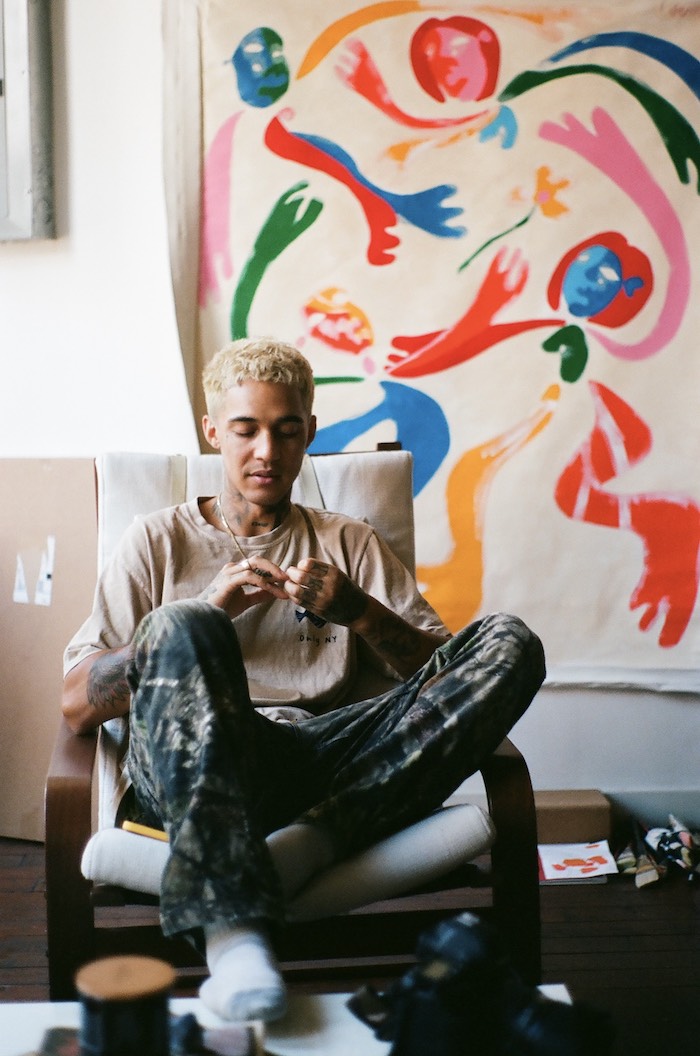

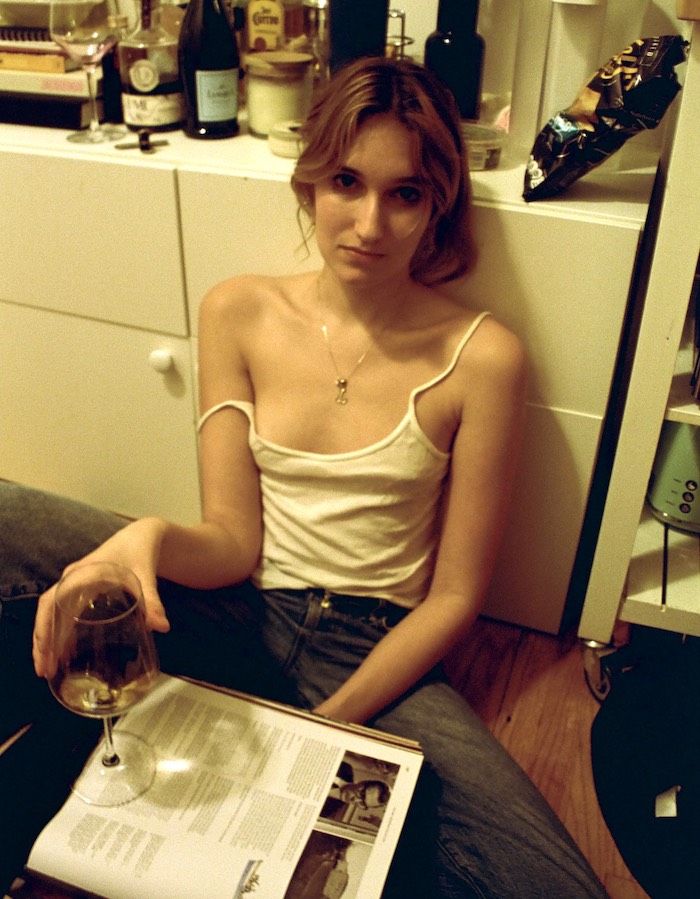
NB— The way you take photos, I think, is reflective of the type of person that you are. When I asked you what was important to you about doing a show, it was just that people thought your images were honest. There is no more honest image than the ones that you choose to take in moments where you feel something. I think all artists can relate to that to some degree. I don't even know if you take photos of strangers ever.
TR— Right. No, it's not my thing.
NB— I'm sure there have been times in your career where it would've been really easy to just commit to being a street photographer or a studio photographer or something like that. But I think your sheer defiance against that has been what's really guided you. I'm not necessarily saying that it's always comfortable or easy to do those things, but I think the reason people gravitate towards your work is because of the attachment that's there. It's not because the images are using the best source of light or that they're super technical. I think there’s so much more to be said about you taking the photo rather than the photo that's being taken.
TR— Thank you.
NB— Talk to me a little bit about the whole idea of having a show about you. How do you feel about that?
TR— That aspect, as I'm sure you know, is not my forte [laughs.] I think it was easier for this because it felt like it almost wasn't even about me. It felt like the show was about my friends so I think that was easier for me to digest. It's definitely hard receiving compliments. The marketing and the promotion of it is definitely something that I'm not good at or something I'm super interested in. But I know it's important. I am really happy to be the one to take the pictures and I do think my friends, in a lot of ways, are a reflection of me. So I do think there were some aspects in the show where I was like, 'Okay, this does have me in it.'
NB— I think it has a lot to do with your selflessness as a photographer as well. You really do want to show the best parts of the people around you. I feel like that's what I noticed being in the room with 200 people at our opening. Your dad actually came up to me and he said, 'Doesn't he have a way of just making all the people around him feel so special?' And I thought that that was something that just was really powerful and impactful because you do have that charisma about you. And I think that when you choose to take a photo, it's almost like saying like, 'I love you.' You know what I mean? This is just your way to tell your friends that you love 'em.
TR— I think that's a good way of describing it. Yeah.
NB— How do you see your career going forward as a photographer, now having drawn this line in the sand?
TR— I definitely want to focus more on shooting in studio. I love editorial work. Something that is always in the back of my mind is, 'Can the way I photograph translate into that setting?' I have shot editorial stuff before and that's something I want to explore more. I just want to continue photography in my own way. That's the most important thing.
NB— I think what's been the most important for me to realize as well, as an artist, especially someone who's young in New York, is that there's a lot of energy around hustle and making it for yourself. Now taking on the role of an agent and an art dealer, I'm having to really step on the opposite side of things and say, 'Well, what's even important to you as an artist?' One thing that I've realized about Tommy is that what's important to him is staying really true to himself. I have to find a way to continue to empower artists like Tommy in spaces that I can now provide without losing why I'm doing it in the first place. And I think that that was why it was such a beautiful experience to be able to start that show with you Tommy. It felt like some semblance of success, but I think I honestly, for us, it would've been successful if we just got the doors open. Can you talk a little bit about the experience of us working together on this and this being our first real show?
TR— Yeah. I mean, I thought it honestly went pretty well. Something I really appreciated was that you gave me a lot of space and respected my creative decisions. I felt like we communicated and we worked through some adversity.
NB— Having gone through something like that, it just made me super proud to be your friend. You don't really know what kind of friendship you have with somebody until you do something of substance together. I think it was exactly what it was supposed to be. It's a beautiful thing when you can make things like that come together. And the only way you can do that is with the help of your friends.
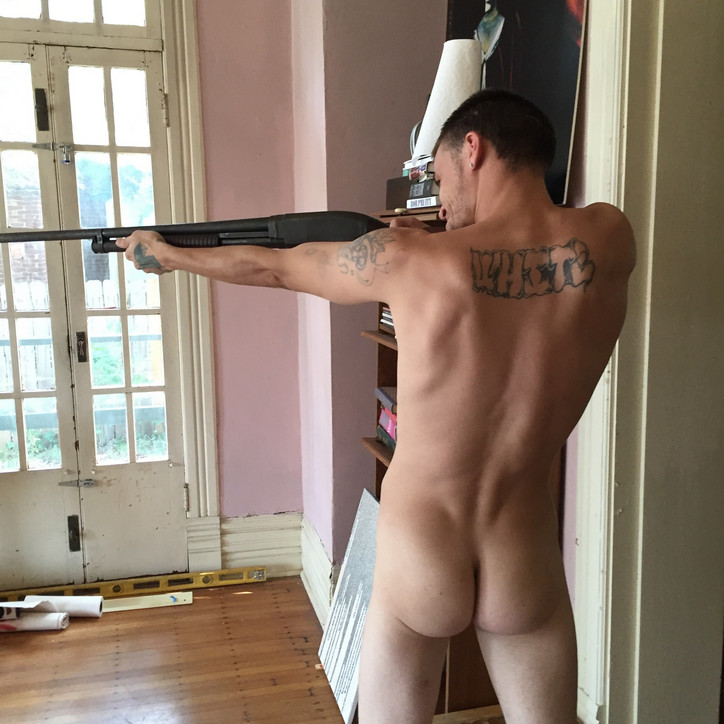
Chivas Clem, Greg with My Grandfather’s Shotgun, From Behind, 2016. Courtesy of the artist and Dallas Contemporary.
Growing up in Texas, Clem harbored a deep-seated phobia of men and boys, a fear rooted in the South’s rigid norms of masculinity. His work today reflects both a confrontation with that past and an attempt to dismantle the very archetypes that once terrified him. Though Clem forms close relationships with his models, his perspective is different from Clark's. While Clark was fully embedded in the lives of his subjects — living, using, and suffering with them — Clem remains both insider and outsider, woven into the fabric of Paris, Texas, yet at a careful distance from the precarious lives of the men he photographs. Shirttail Kin tackles broader American anxieties, particularly the "redneck" stereotype often entangled with racism, homophobia, and violence. Clem’s work challenges these assumptions, offering a glimpse of the fragile humanity that persists beneath the cultural caricatures.
Ahead of the opening, I called Clem from New York. He answered from his dilapidated home-studio in Paris, Texas, where many of these photographs were taken. We spoke about Southern masculinity, reconciling with his childhood phobia, the serendipity of meeting his models, and how his work balances despair, darkness, and innocence.
Hi Chivas, how's it going?
Chivas Clem— It’s going okay, I guess. I'm ready for summer to be over kind of.
I feel the same way.
It's miserable in Texas. It was like 113 degrees in my car the other day.
That's awful.
No, it's gotten really insane. I grew up here and when I was a kid, it was never like this. It was hot in the summer, but it wasn't like this.
I grew up in New York, and I feel like that about our summer thunderstorms. They were never as crazy as they are now.
Yeah. It's true!
When I first saw some of the photos in Shirttail Kin I had a visceral reaction, I teared up at some of them.
Oh, God. I'm so happy to hear that. People have such dramatically different reactions to the work. Occasionally I'll show the work to somebody, and they're very moved by it, even to tears, and then sometimes I show it to people and they see it as soft-core pornography.
I had a show in Houston a couple of years ago with Bill Arning, and Bill caught this guy masturbating in the gallery, which is kind of flattering in a way. I mean, I can't imagine that happening at David Zwirner.
Yeah, probably not. I didn't view the photographs as pornographic. What resonated most was the act of seeing these men, depicting them through your lens, and now, exhibiting the images in a show at Dallas Contemporary. There’s this American subculture that’s deeply marginalized and this project, its placement, defies that.
People don't talk about that with the work that often, but it is very much about them feeling seen. A huge part of my work is building this sense of intimacy with them so that they’re comfortable with me. It all happens very organically, I've never done a formal audition or anything, and they're all just local people that I've met. I met one of them at a gas station, and another while hitchhiking, and I’ve cultivated friendships with all of them. A lot of them sit for me over and over again.







Having grown up in a place where masculinity was rigidly defined and often weaponized, how do you think your Texan roots shaped not only your artistic lens but also your understanding of the men you document in Shirttail Kin? Does the work, in a sense, reflect your own reconciliation with that past?
Well, when I was a child I actually developed a terrible fear of men and boys, so severe that I actually had a therapist who wrote a note to the school that I could not take boys’ phys ed so I was transferred through junior high as a girl for a few years, which was very confusing for everybody but me. I couldn’t step into the boys’ locker room without having a meltdown.
I grew up around rednecks and had this terrible fear and fascination for them. And erotic fixation, which I didn’t discover until later on. I still live in the country north of Dallas, and that’s still how everybody here is.
America is witnessing a crisis of masculinity right now, which has been growing since the women’s movement and the gay rights movement. There’s this hysteria amongst the right over men who dress in drag that it’s some kind of humiliation ritual. I wanted to look at old-fashioned masculinity with a fresh set of eyes. What I found here is that these men are really wearing their own king of drag, clinging to their own understanding of masculinity. That was very interesting to me.
There’s a long history of photographers who have looked at cowboy archetypes, like Danny Lyons and Larry Clark, but I feel like that archetype’s dated now — it’s not as relevant. There aren’t any real cowboys anymore; it’s been reduced to an aesthetic. If the cowboy archetype represented rugged individualism, then what it’s become, if it’s the image of the redneck, is a deplorable person, racist, homophobic, all of the above.
I wanted to show the humanity in these guys. It’s funny, originally I didn’t want to call the show “Shirttail Kin.” A friend of mine said that I should call it “We Found Love in a Hopeless Place.”
Given the often deeply ingrained societal norms around masculinity that exist, especially in the rural South, how do you see their lived experiences reflecting broader cultural narratives in America today?
What people don't realize is that the living conditions are often way worse than you could imagine. You can’t imagine the environments some of my models grew up in. There’s one whose parents abandoned him in a house when he was 12, and he kept living there alone, with nowhere else to go. He had neighbors who would bring him food occasionally. Some had it way worse. And of course, they grow up filled with so much rage and anger, but also fear, so many of them are terrified. It's absolutely like witnessing the return of the repressed.


Chivas Clem, Coty in the Bathtub after Breaking In, 2021. Courtesy of the artist and Dallas Contemporary.
Chivas Clem, Cole in front of Chris Farley, 2019. Courtesy of the artist and Dallas Contemporary.
One image that stands out is the boy sitting on the staircase — there’s an almost haunting innocence in his gaze. What drew you to him in the first place?
That kid is the most sensitive. He's actually in prison right now. The reason that I met him was because he broke into my house when I was out of town. I came back and I found him in the bathtub asleep, just taking a bath. He has the kind of face that could haunt you for a thousand years.
Do you believe that, in many ways, the men you photograph are shaped by their environments — almost as if they are instruments of their own fate?
God, an instrument of your own fate. I never really thought about that, but you’re exactly right. Those are powerful words. A lot of these men are victims of their circumstances. They grow up without access to anything. I would say 60 to 70% of them are virtually illiterate, and there’s such naivety and innocence to them.
Do you find that this innocence or naivety gives them a different kind of wisdom or perspective?
There’s an interview from the ‘60s with Pasolini, and the interviewer asks, “Who are your favorite people?” And Pasolini’s response implied an admiration for the uneducated because they aren’t spoiled by petty-bourgeois ideals. It’s the same with Jean Genet, who was fascinated by criminals, viewing them as figures of innocence. He said something like, “The criminal organizes a disordered world for us.”
Given the transient and often isolated nature of the men you work with, is there a sense of camaraderie among them?
That's an interesting question. I would say that most of them are quite feral, like lone wolves, because they were never parented correctly or taught about what it means to be loved. They see relationships as transactional. They might develop a bond with somebody but it’s often fleeting. They might have to go to prison for two years, then that person finds somebody else.
If you’re barely surviving, I think it’s very difficult to create any genuine bonds. I have models that have girlfriends, but the relationships never last. And it’s always transactional. She has a check, a place to stay, or he gets a check and she stays with him. When I first started doing this, one of my models went to prison and I sent him a care package. He called me crying, and this is not somebody who cries. He said that he’d never had someone do something so nice for him in his entire life — that his mother would never. And she probably just can’t afford to.






Would you say your approach is driven more by instinct or is there a method to the scenes? How do you balance spontaneity with intention in your work?
It's all instinctual. There's no real method to it at all. Everything is very much by chance. I never plan to meet the guys I do. When I first moved back here, I was driving to my studio one day and there was a guy on the side of the road in tight white jeans, a white t-shirt, and a white cap with headphones on, moving to the beat of the music. It was so cinematic, like something out of Saturday Night Fever. He became my first model.
Photographing these men — who in some ways represent the very figures you feared growing up — have you found a new understanding of your childhood phobia?
When I started photographing them, I realized that they were just as fearful as I was as a kid, but rather than becoming hysterical, they acted outward. I guess I learned that humanity is hard to recognize in light of our own fears and prejudices. The work is about finding humanity in a subculture that is perceived as so deeply dangerous. I mean the boogeyman of American culture right now is the redneck — the deplorable right. Yet, there’s also a deep sadness and vulnerability to this figure.
Addiction seems to lurk in the background of the lives you capture. How does the presence of drug use in the rural South inform the narratives you’re telling through your photography?
Absolutely. And there's so much despair. I mean, I was a junkie in New York, hooked on heroin. The reason that I moved back to Texas twenty years ago was to get sober and now I am. Here, people are primarily meth addicts, like crystal meth, which I think it’s way worse that opioids because it fucks with your brain chemistry in such a way. It’s very difficult to get sober from opioids, we know that, but you can, and get your head right again.
If you’ve been doing crystal meth for 10 years and get sober, I don’t know if your brain ever really recovers. A lot of these guys grew up not just impoverished and plagued by domestic abuse, but also with terrible, terrible intergenerational addiction. There’s an entire generation of kids affected by their parents’ drug use. It’s a fucking horror show really, another kind of darkness.
Like alcoholism, but worse?
Much worse. I do have a model whose mother drank while she was pregnant, and he has fetal alcohol syndrome. He kind of escaped the worst of it, but he has all these learning delays, despite being so bright and full of ideas.
Another guy who modeled for me is an incredible poet. He wrote poetry all through his jail term in Oklahoma, and he writes music — he plays the banjo and the fiddle. Under different circumstances, this guy would’ve gone to NYU and had a recording contract. He works a shitty job roofing, but he’s completely committed — he has like 30 volumes of poetry written. But he doesn’t understand how getting any of it published or recognized works.


Chivas Clem, Dillon at the carwash, Night, 2020. Courtesy of the artist and Dallas Contemporary.
Much of the despair you describe seems to be rooted in a lack of access — whether it’s access to education, support, or even a path out of addiction. Do you think this lack of access, alongside the intergenerational struggles you capture, plays a central role in the stories your work tells?
Yeah, I mean it can get pretty dark down here, and I didn’t want that aspect to be overshadowed by — well, I was just reading a snippet somewhere about the work, and they immediately launched into this whole thing about queerness. I didn’t want the work to be coded in that way because none of the models identify as queer. That’s not to say that they don’t have sex with men, but that’s often transactional, and not the focus of the work.
Certainly, I’ve borrowed aesthetics from art history, like cheesecake photography, but I don’t think the work is exclusively about queerness.
Yeah, I don’t see that.
This writer called me the other day and was like, “Okay, so all of these guys are twinks.” And I was like, “What? No…”
[Laughs] I’m sorry.
That word has no real meaning here. That’s like a grand misreading, but I think that people see what they want to see through the lens of contemporary culture.
I wonder if any of the guys you’ve shot would know what a twink is.
They probably have no idea what a twink is. But yeah, you can’t control the reaction to what you put out into the world. I was reading something recently about when Larry Clark first made Tulsa. What was that, ’76 or something?
’71.
Shit. That's the year I was born. It’s interesting how mysterious that work was to people because nobody thought about addiction, the rural poor, or any of that. For a lot of his early shows, Larry exhibited alongside postmodernists like Richard Prince and Cady Noland. It wasn’t presented as photography. It was more off-the-wall than that — there was no sentimentality to it.
I wonder what the reactions to your work will be with the show being up so close to the election.
Well, the curator, Alison M. Gingeras — who is brilliant by the way — wanted the show to coincide with the election cycle because she felt that it would address the issue of Texas, which has become such a red state in recent years. Texas wasn't always a red state. I feel like we are really on a precipice, to be honest with you. People don’t understand just how dangerous things have gotten. The 2025 document that the Heritage Foundation put out is a recipe for fascism.
How has the community in Texas responded to the project?
Well, there really isn’t an art community here in Paris, Texas — it’s such a tiny town. And honestly, I don't show the work locally because it's often seen as homoerotic. When I show the work to my models, though, they all get kind of tickled by it. I think they like the idea of being seen, but they’ll sometimes say things like, “I just don’t want my grandmother to see it.” I always tell them I would never take a picture that I wouldn't show my own grandmother.
This will be the first time I’m showing the work in Texas, so it’ll be interesting to see what people think. People will probably code it, again, as homoerotic. It might be for them to see beyond that.



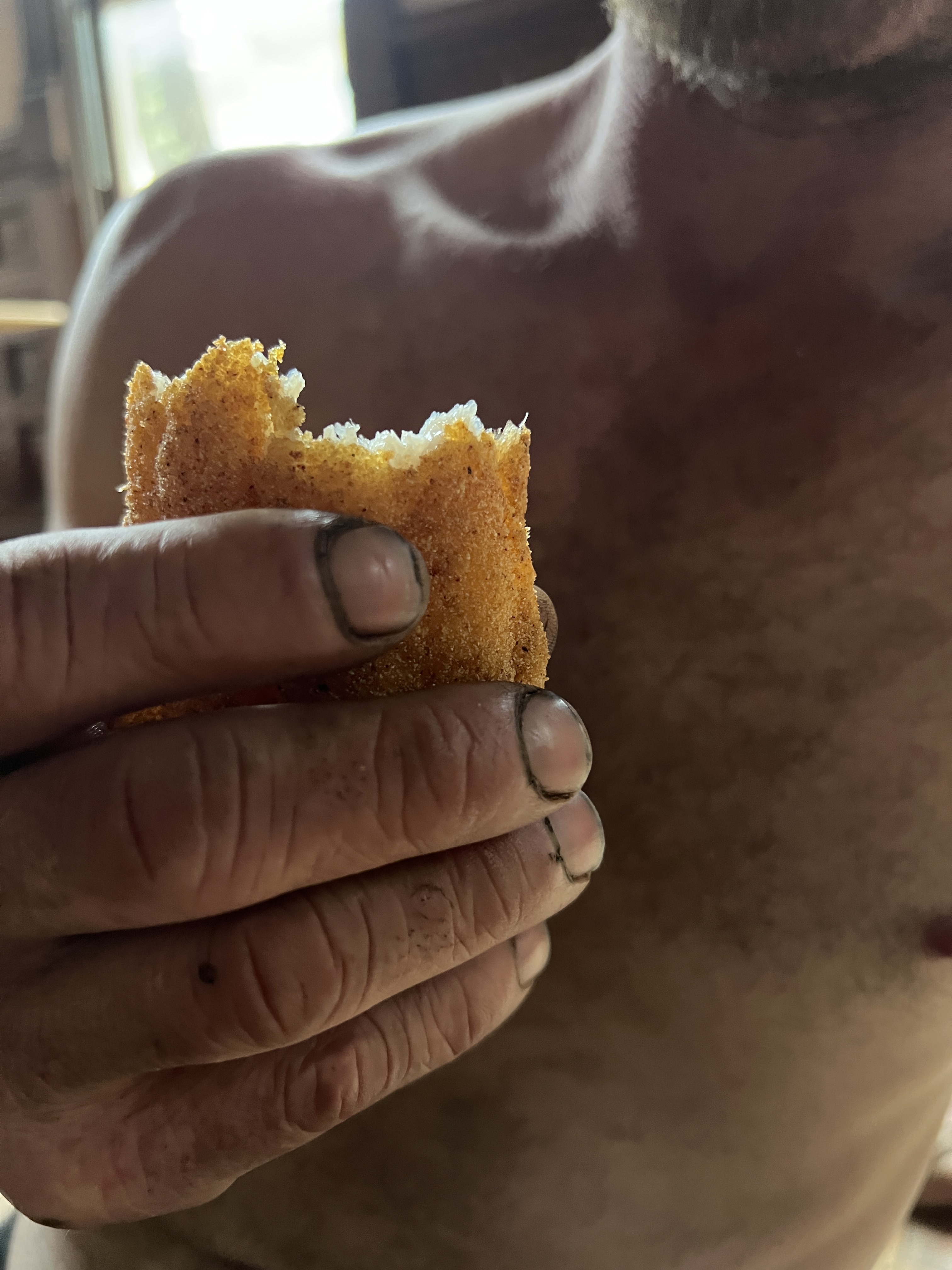



Berlin-based magazine 032c, which has long blurred the boundaries of a traditional publication with its extensive line of garments and apparel, launched a new, permanent, gallery space. Through its first show “Productive Narcissism,” artistic directors of the gallery Claire Koron Elat and Shelly Lea Reich insert themselves into Hugo’s ever-so-relevant dialect, challenging the contemporary conventions of a “publication” while addressing the self’s relation to re-invention.
In what ways will the gallery distinguish itself from the publication?
Claire Koron Elat— The gallery is part of the 032c universe. While the magazine is the nucleus of this universe, it expands into different realms – the ready-to-wear, residencies, exhibitions, and now the permanent gallery space. The gallery is an organic expansion, and at the same time, it questions the future of print publications. What are the alternatives to traditional ways of working in editorial? In our current state and time, flat images and digital are being highly prioritized; the gallery is also a response to that cultural shift.
Shelly Lea Reich— Our first show touched upon this topic of reinvention specifically, but it also reflects the publication and connection to redesign through the written word. We have worked with all of them in the past, which was a conscious decision to further and establish a long-term relationship with them. The gallery will be about establishing and furthering those connections, too.
You will be operating under a “semi-traditional model.” Could you define what this implies in practice?
CKE— It’s called semi-traditional because we want to start without a representation model: the gallery is officialy open and we have a running program, but we’re not yet representing any artists. It’s considered traditional because we have openly communicated that this is a commercial operation. We’re selling the art, and–while deeply interested in providing cultural value–we’re trying to make a profit.
But so is everybody, although desires of profit margins may differ. The business model under which art exists is hard to escape but easier to manipulate.
SLR— It is. And, in comparison to fashion, it’s something that the art world prefers not to talk about. Both Claire and I come from a background in the arts, meaning that we know the sensitivities in this scene, and how to address them with collectors.


Cezary Poniatowski, Reverse Prophecies, 2021. Ser Serpas, Alice (Language) Praxis 4, 2024.

Jon Rafman, 2024.
How might the “sensitivities in this scene” differentiate, given the gallery's location?
CKE— 032c was founded in Berlin and therefore has a deep connection to the city and its creative class. In its history, themes, and ethos — while simultaneously being hyper-international — 032c is deeply tied to the city; It made sense to open the first permanent gallery here. Joerg [Koch] has been organizing shows for decades, back when he had the old office at Brunnenstraße and then in St Agnes Furthermore, Berlin is a great place for welcoming “novel” projects because the scene is relatively open to finding newness in its traditions.
SR— Berlin has established itself as an important player in the art scene. Many galleries in the city are showing exhibitions at a really high level with a real in-depth intellectual curation, and as the city is still considered a relatively large city, but with a more affordable economic structure, we find it quite accommodating for new establishments. This transition of Berlin becoming a dominant cultural city in Germany and also in general is particularly notable in the context of galleries that have migrated from Cologne, such as neugerriemschneider and Galerie Buchholz, which expanded here in the 2000s after the fall of the wall - there has been a resurgence in Berlin's cultural landscape. At the same time, there’s still room for new initiatives to rise.
CKE— So far there hasn’t been any criticism. Probably because we’re not trying to portray the gallery as something that it isn't. We’re not a non-profit or charity foundation. We’re a gallery that, just like any gallery that travels too fairs or simply organizes exhibitions, is trying to sell what you see.
With the program we want to draw attention to the hybridity of the creative industry, and specifically that of art and fashion. Artists have always collaborated with mediums outside of their personal “traditional means,” or with other artists, or with fashion brands. Likewise, fashion brands have been inspired by artists throughout time. This is nothing new. That being said, what’s recently frowned upon is the idea that the more hyphenate you are — a DJ, a photographer, an artist, a director — the less focus or authority you hold over your chosen practices. I’m not bringing this to the table to make any judgement, but rather the opposite. Shelly and I have had a longstanding vision of reframing this hybrid intellectually. 032c Gallery will provide that. It will welcome experimentation.
The space is re-thinking the means of a magazine, while the exhibition itself is also commenting on the theme of reinvention. Through Boris Groy’s essay, the show investigates how “we are required to constantly re-invent ourselves,” thereby placing us in a permanent state of uncertainty. Who places this obligation upon us?
CKE— At the end of the day, it's not an obligation. It’s as philosophical and controversial as the question regarding free will. I would argue that you put this “obligation” on yourself, but doing so almost just by being part of contemporary society, especially in creative industries where one is “required” to reinvent to stay relevant. It only becomes dangerous once the speed of these reinventions reaches a constant. Endless adoption leads to uncertainty because that's where the core of oneself might get lost.
SLR— I think “requirement” here could be quite positive rather than negative. It’s very freeing to have these possibilities to reinvent yourself constantly. And it's something that's quite exciting. To be able to access a new version of oneself is to interact with different cultures, ideas, and expressions. It’s all part of a larger game. A good example of this is Amalia Ulman. We exhibited another work by her recently “excellences & perfections,” which recently celebrated ten years. In it, she intentionally adopted the role of a hyper-glamorous woman living a very lavish public life. Her friends and close circle quickly became confused with what was real and what wasn’t, but what’s fascinating is that so did Ulman, too. She explains how she got lost in the making, and confused her personae and personality for each other.

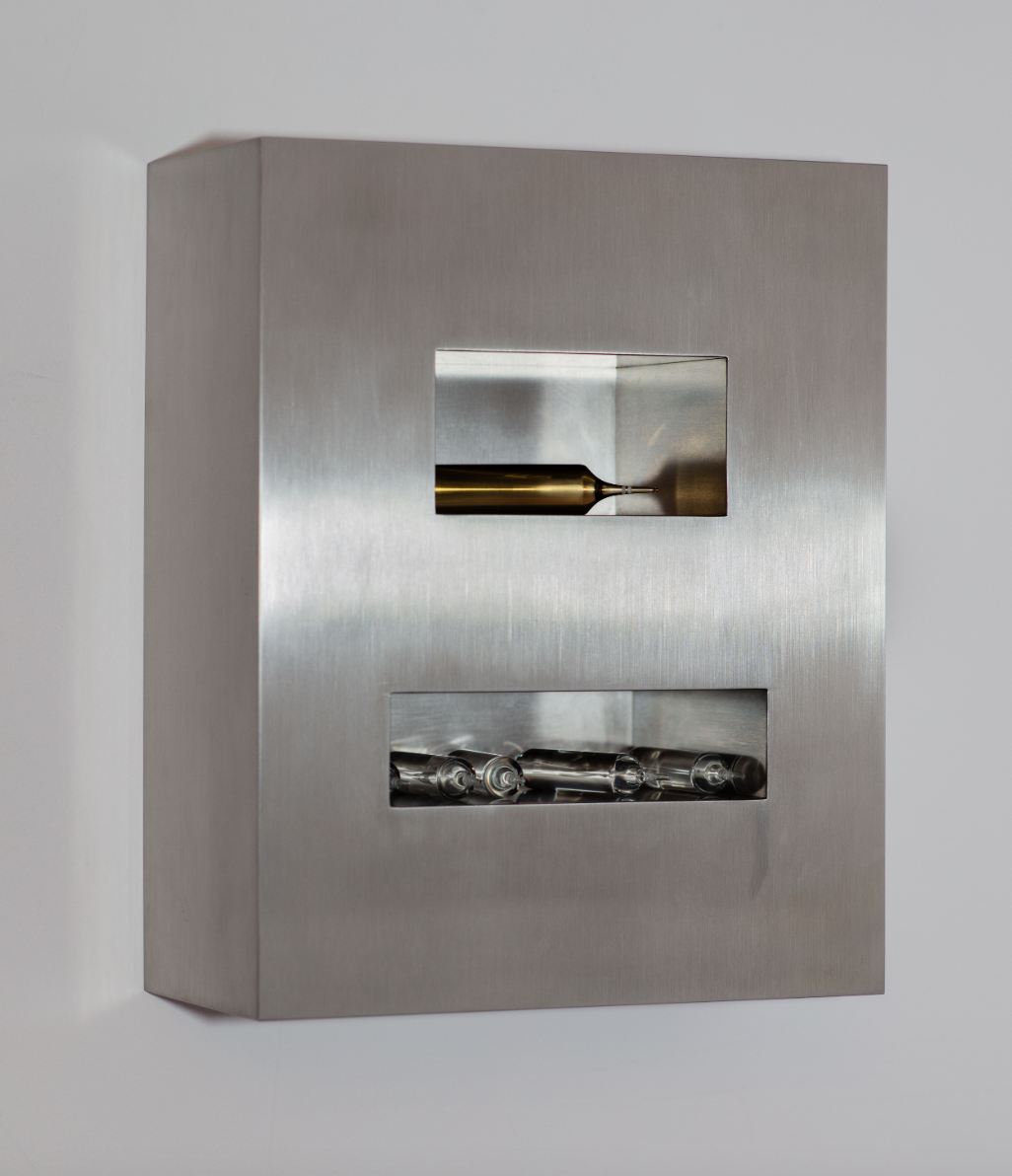
Lukas Heerich, Untitled, 2024.
Re-invention can become dangerous once the means of it is in the hands of the wrong people. And given that a lot of reinvention, as with Ulman, takes place in a virtual space or as a response to virtual hierarchies, does it not pass the risk of unregulated manipulation?
SLR— But you also have the freedom to manipulate the tools in return. As you are aware of these sets of rules, or your role as a user, that's where it becomes playful. I think that’s what’s specific about our times, that it’s easier if not even easy to get access to tools that weren’t accessible before. Circumstances under which self-creation is not only possible but infinite.
CKE— Humans were the one who built the algorithm. It’s not like we are being controlled by this otherworldly superpower. It’s not the man versus machine here—it’s you versus yourself. It’s a mechanism that we created and something that we also still control. Of course, we’re not always conscious about what we consume or in the ways in which it affects us. But once we take time to reflect upon it, question it, question ourselves, is when we get control over our self-reinvention.
How often do you reinvent yourself?
SLR— Good question. I think that we reinvented ourselves with the gallery. It’s been a shift in mindset.
CKE— For me, personal reinvention it's not so much about reinvention but rather a progressive invention. What about yourself?
I got a new haircut. A new look is always a reinvention because suddenly you are perceived differently. I think of reinvention as an external, social act. It’s dependent on the response, even though Narcissus might suggest otherwise.


Hugo Comte, 2024.
“Productive Narcissism” will be on view at 032c Gallery in Berlin until October 8th, 2024.